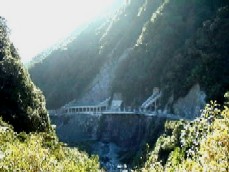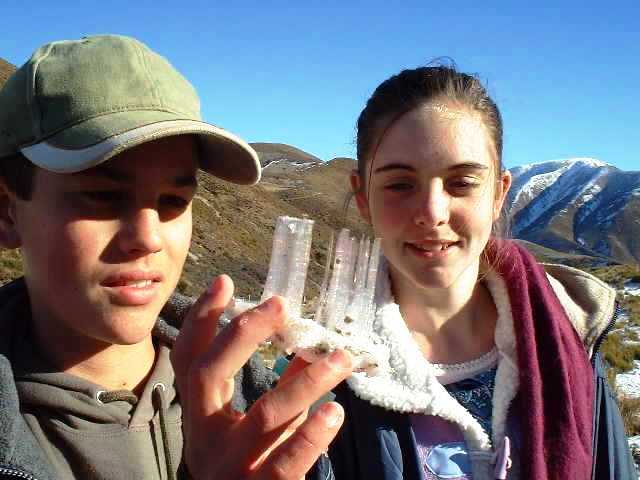Mountain Erosion
|
We see the mountains being torn down with many forces involving frost shattering, frost heave, avalanches, screes, rock rivers, fans, winds, chemicals, rivers and more. Rivers carry the shattered mountain remnants on to develop the vast plains and affect settlements throughout the world. KANES explain to interested guests the processes and forces that are disassembling the mountains and disposing the material at long distances from them. We look at ways of managing this process to help protect communities from these destructive forces. |
|
|
Glaciation We learn to recognise evidence of the world's most powerful erosion force and see the results of their past ice age activity. |
|
|
|
Frost Shattering The second most effective erosion force is the shattering of the rocks and mountains by the force of freezing water. Your KANES guide introduces study groups to locations to witness this amazing process. |
|
|
Frost Heave During winter we see freezing water force its way through the soil forming delicate crystal columns of sparking ice. This process rips the soil from any plants leaving them to die and it leaves the soil ready to be carried by the precipitations. |
|
Limestone Erosion
* A chemical process - slow and methodical. We explore areas where this process occurs with caves, sink holes and more. |
|
|
|
River Erosion
|
|
|
Screes, Rock
Rivers & Fans
Witness the clearest and most varied examples of these features. See how they affect settlements, land use and transport. When time permits, we climb a scree flow to familiarise ourselves with its gradient, movement process, texture and the features of the rock fragments. |
|
|
Weathering
|
|
|
Braided Rivers Many different rivers in this zone carve chasms, gorges, valleys, waterfalls and caves. They carry the eroded material collect broken mountains . We see them actually transporting the mountain materials to places where the current slows and they settle to full other parts of valleys, flood plains and to extend the land in the coast. . |
![]() tailor your experiences
to meet your
interests
tailor your experiences
to meet your
interests
Top




